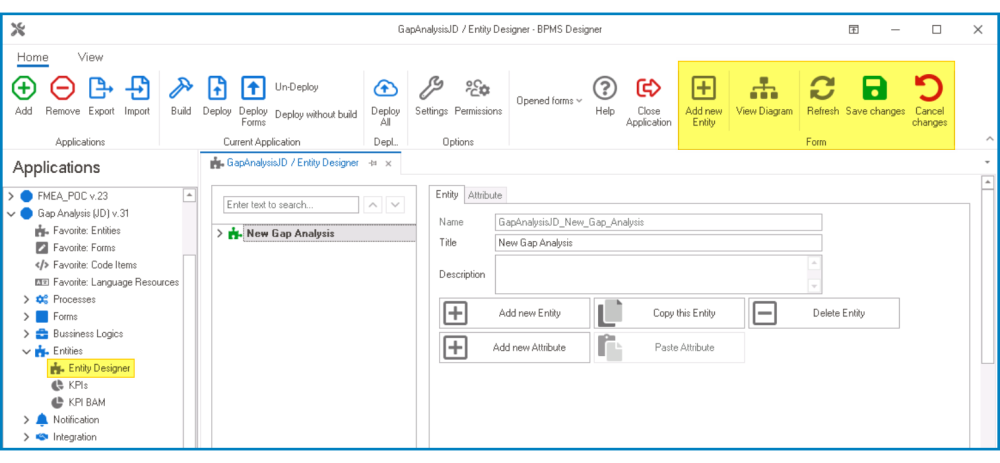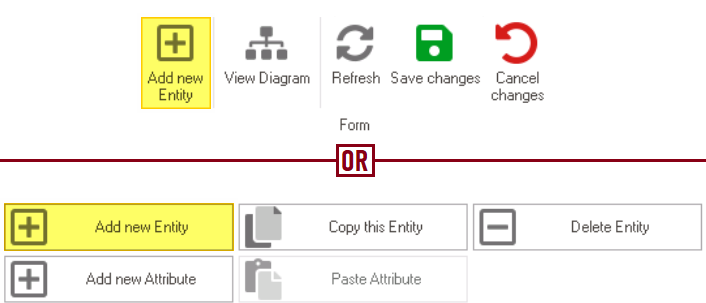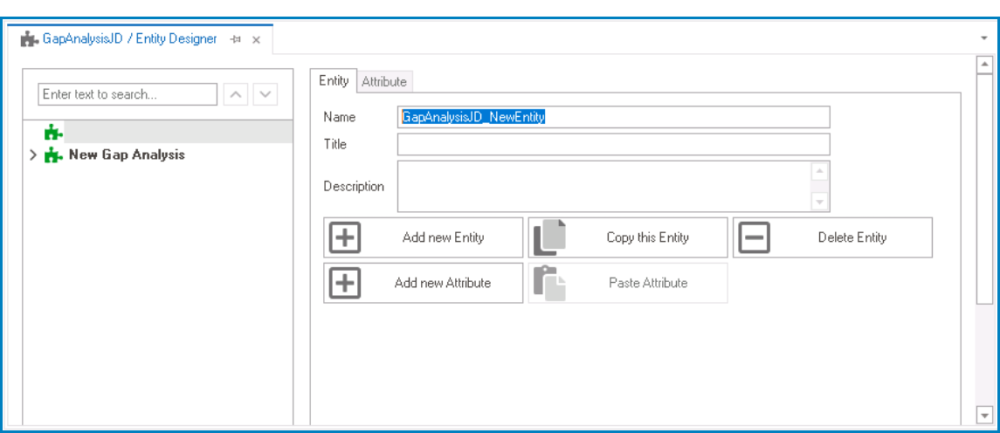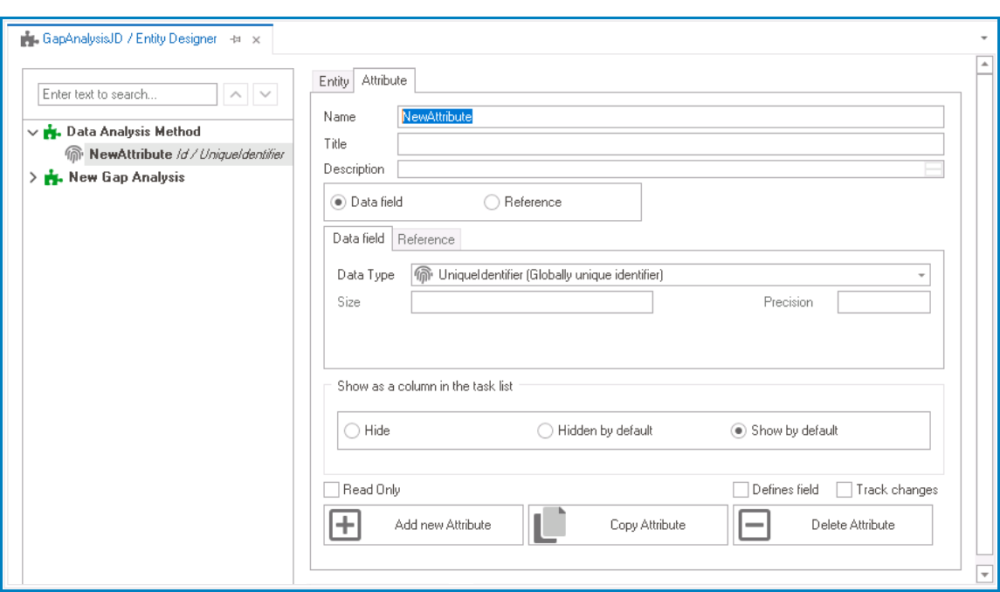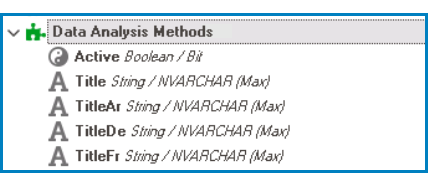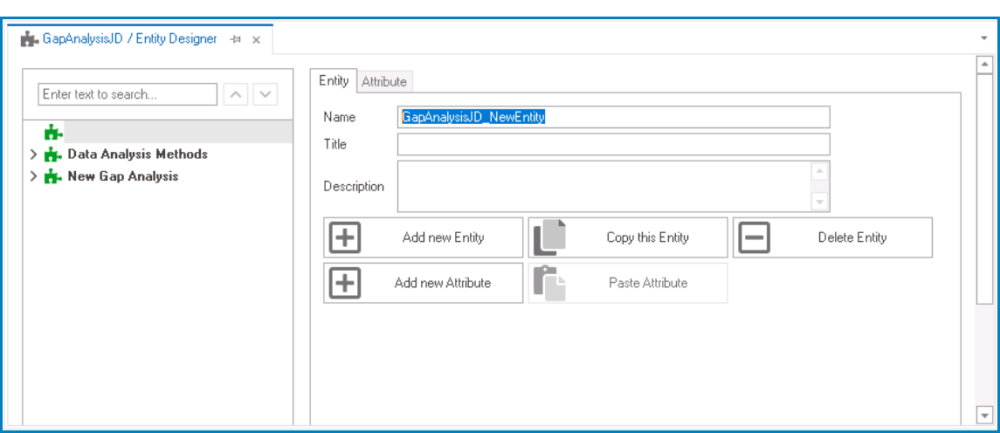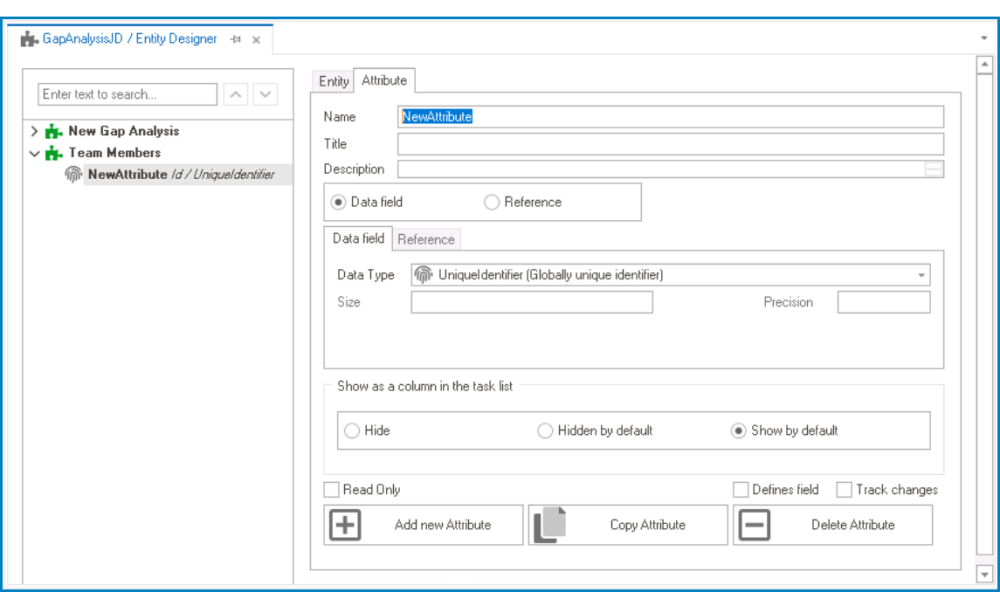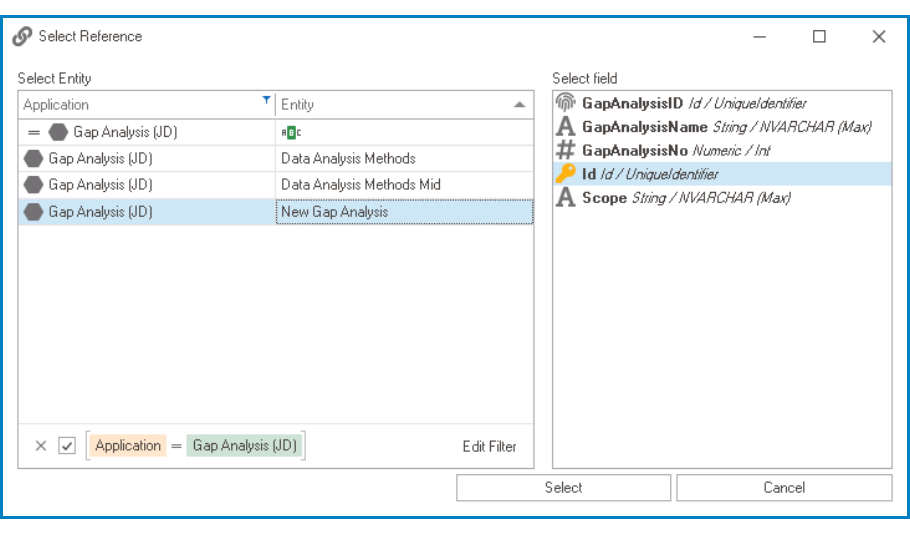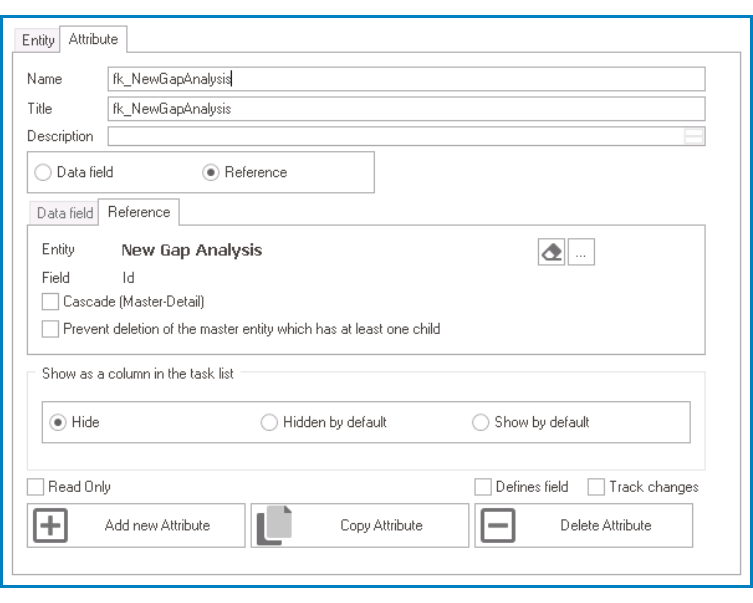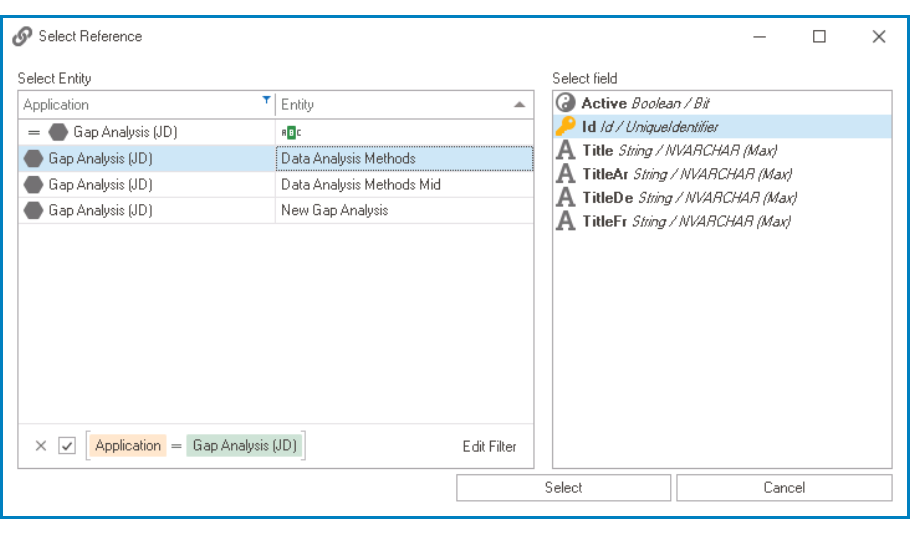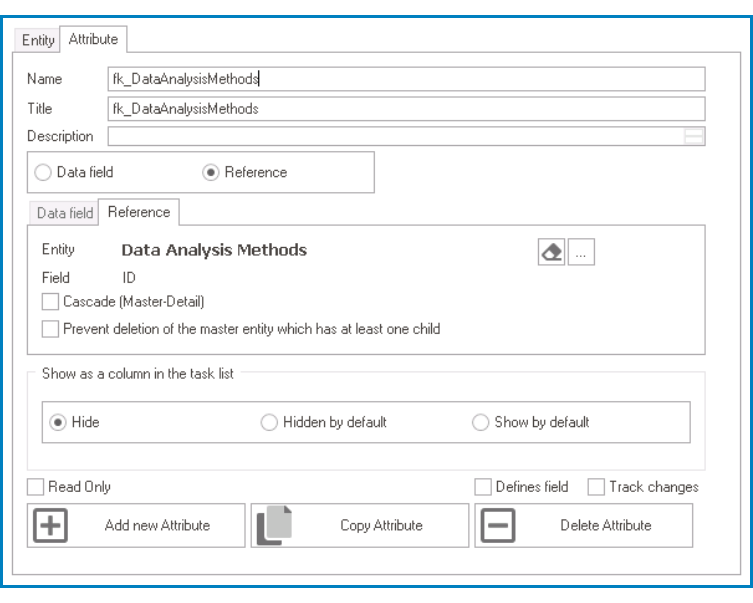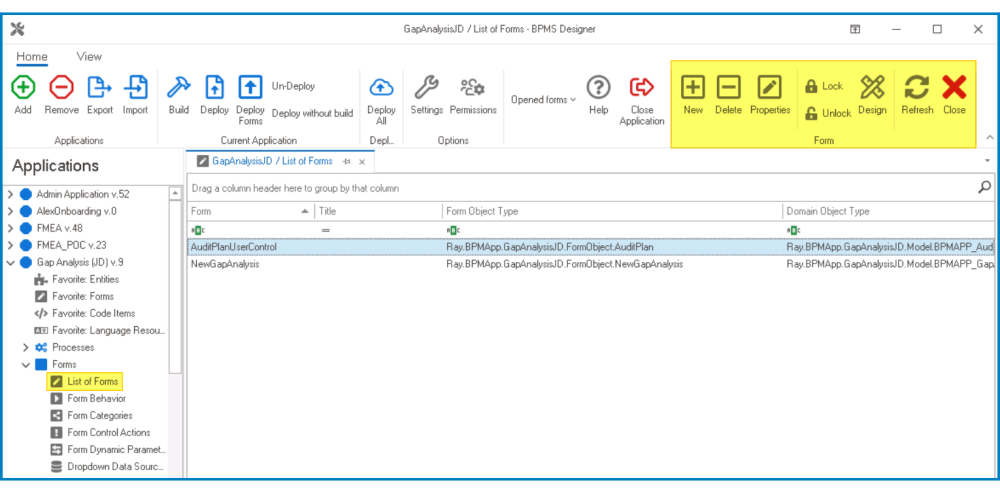To link the mid-entity to a custom entity and set up the corresponding form(s) for the custom entity, take the following steps:
- Create Custom Entity
- Access Entity Properties
- From the Application Tree, navigate to Entities > Entity Designer (double-click to open). It will display the Entity Designer tab and expand the menu bar to show additional options.
- From either the Entity tab or the menu bar, select the Add New Entity option. It will display a set of fields in which you can define the properties of the new entity.
- From the Application Tree, navigate to Entities > Entity Designer (double-click to open). It will display the Entity Designer tab and expand the menu bar to show additional options.
- In the fields of the Entity tab, users can define the properties of the newly created entity.
- In the Name field, provide a name for the entity.
- In the Title field, either specify a custom title for the entity or let the system automatically generate it based on the provided name.
- In the Description field, provide a description for the entity, if needed.
- Create Attributes
- Access Attribute Properties
- Once you have created the entity, select the Add New Attribute option from the Entity tab. It will direct you to the Attribute tab where you can define the properties of the new attribute.
- Once you have created the entity, select the Add New Attribute option from the Entity tab. It will direct you to the Attribute tab where you can define the properties of the new attribute.
- In the fields of the Attribute tab, users can define the properties of the newly created attribute.
- In the Name field, provide a name for the attribute.
- In the Title field, either specify a custom title for the attribute or let the system automatically generate it based on the provided name.
- Choose an attribute type— Data Field or Reference.
- For the Data Field attribute, select the appropriate data type from the dropdown.
- For the Reference attribute, select the appropriate reference from the System Reference window.
- Custom Entity Attributes Example
-
- Create Mid-Entity (Table)
- Access Entity Properties
- From the Application Tree, navigate to Entities > Entity Designer (double-click to open). It will display the Entity Designer tab and expand the menu bar to show additional options.
- From either the Entity tab or the menu bar, select the Add New Entity option. It will display a set of fields in which you can define the properties of the new entity.
- From the Application Tree, navigate to Entities > Entity Designer (double-click to open). It will display the Entity Designer tab and expand the menu bar to show additional options.
- In the fields of the Entity tab, users can define the properties of the newly created entity.
- In the Name field, provide a name for the mid-entity.
- In the Title field, either specify a custom title for the mid-entity or let the system automatically generate it based on the provided name.
- In the Description field, provide a description for the mid-entity, if needed.
- Create Foreign Keys
- Access Attribute Properties
- Once you have created the mid-entity, select the Add New Attribute option from the Entity tab. It will direct you to the Attribute tab where you can define the properties of the new attribute.
- Once you have created the mid-entity, select the Add New Attribute option from the Entity tab. It will direct you to the Attribute tab where you can define the properties of the new attribute.
- In the fields of the Attribute tab, users can define the properties of the newly created attribute.
- Foreign Key Towards Main Entity
- This foreign key is linked to the entity associated with the form where the multi-select dropdown control is being implemented.
- In the Name field, provide a name for the foreign key.
- In the Title field, either specify a custom title for the foreign key or let the system automatically generate it based on the provided name.
- Choose the Reference option.
- Click on the
button. It will display the Select Reference window. From the entity section, select [AppName] – [MainEntity]. From the field section, select ID.
- Selecting the entity will redirect to the Attribute tab, where the entity section will display [MainEntity] and the field section will display ID.
- This foreign key is linked to the entity associated with the form where the multi-select dropdown control is being implemented.
- Foreign Key Towards Custom Entity
- This foreign key is linked to the custom entity—that is, the entity linked to the form from which data will be pulled.
- In the Name field, provide a name for the foreign key.
- In the Title field, either specify a custom title for the foreign key or let the system automatically generate it based on the provided name.
- Choose the Reference option.
- Click on the
button. It will display the Select Reference window. From the entity section, select [AppName] – [CustomEntity]. From the field section, select ID.
- Selecting the entity will redirect to the Attribute tab, where the entity section will display [CustomEntity] and the field section will display ID.
- This foreign key is linked to the custom entity—that is, the entity linked to the form from which data will be pulled.
- Once users have created the necessary foreign keys for the mid-entity, the end-result should resemble the following list:
- Create and Design Custom Form(s)
- Access Form Properties
- From the Application Tree, navigate to Forms > List of Forms (double-click to open). It will display the List of Forms tab and expand the menu bar to show additional options.
- From the menu bar, select the New option. It will display the Form Properties window.
- From the Application Tree, navigate to Forms > List of Forms (double-click to open). It will display the List of Forms tab and expand the menu bar to show additional options.
- In the Form Properties window, users can create a new form for the application.
- In the Name field, provide a name for the form.
- In the Form Entity field, either specify a custom name for the form entity or let the system automatically generate it based on the provided form name.
- From the Entity dropdown, select the custom entity.
- Click OK and confirm both the prompt to start designing the form and the prompt to create a draft.



